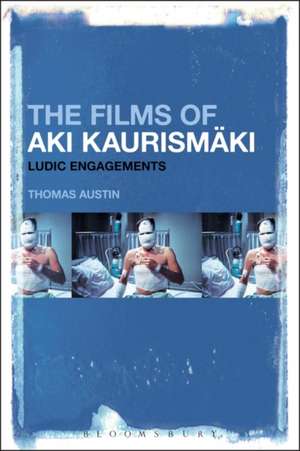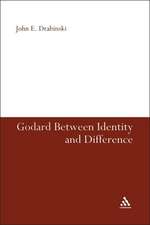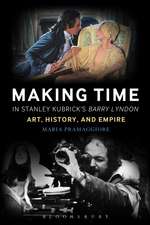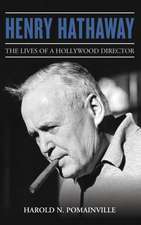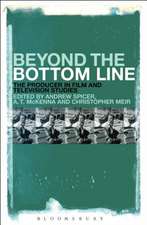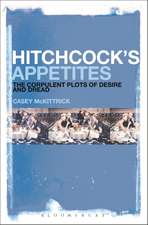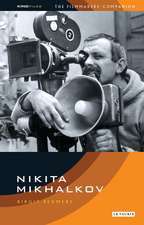The Films of Aki Kaurismäki: Ludic Engagements
Editat de Thomas Austinen Limba Engleză Paperback – 18 mar 2020
| Toate formatele și edițiile | Preț | Express |
|---|---|---|
| Paperback (1) | 223.76 lei 6-8 săpt. | |
| Bloomsbury Publishing – 18 mar 2020 | 223.76 lei 6-8 săpt. | |
| Hardback (1) | 714.19 lei 6-8 săpt. | |
| Bloomsbury Publishing – 5 sep 2018 | 714.19 lei 6-8 săpt. |
Preț: 223.76 lei
Preț vechi: 288.37 lei
-22% Nou
Puncte Express: 336
Preț estimativ în valută:
42.82€ • 45.79$ • 35.70£
42.82€ • 45.79$ • 35.70£
Carte tipărită la comandă
Livrare economică 17 aprilie-01 mai
Preluare comenzi: 021 569.72.76
Specificații
ISBN-13: 9781501363160
ISBN-10: 1501363166
Pagini: 240
Ilustrații: 16 bw illus
Dimensiuni: 152 x 229 x 17 mm
Greutate: 0.32 kg
Editura: Bloomsbury Publishing
Colecția Bloomsbury Academic
Locul publicării:New York, United States
ISBN-10: 1501363166
Pagini: 240
Ilustrații: 16 bw illus
Dimensiuni: 152 x 229 x 17 mm
Greutate: 0.32 kg
Editura: Bloomsbury Publishing
Colecția Bloomsbury Academic
Locul publicării:New York, United States
Caracteristici
The
first
collection
in
English
on
one
of
the
outstanding
auteurs
of
contemporary
Nordic/European
cinema
Notă biografică
Thomas
Austinis
Reader
in
Media
&
Film
at
the
University
of
Sussex,
UK.
He
is
the
author
ofHollywood,
Hype
and
Audiences:
Selling
and
Watching
Popular
Film
in
the
1990s(2002)
andWatching
the
World:
Screen
Documentary
and
Audiences(2007);
and
co-editor
ofContemporary
Hollywood
Stardom(2003)
andRethinking
Documentary:
New
Perspectives,
New
Practices(2008).
Cuprins
List
of
ContributorsAcknowledgmentsIntroductionThomas
AustinPart
1:
Time
and
SpaceChapter
1:
Temporality
in
Kaurismäki:
Anachronism,
Allusion,
TableauThomas
AustinChapter
2:
Three
Ecologies
of
KaurismäkiPietari
KääpäChapter
3:
Beyond
the
Edges
of
the
Frame:
The
Invisible
in
Aki
Kaurismäki's
FilmsLara
PerskiChapter
4:
Kaurismäki
and
JapanEija
NiskanenPart
2:
Tone
and
Point
of
ViewChapter
5:
The
Camera's
Ironic
Point
of
View:
Notes
on
Strange
and
Comic
Elements
in
the
Films
of
Aki
KaurismäkiJaakko
SeppäläChapter
6:
Dreamers
and
Other
Sentimental
Fools:
Money,
Solidarity
and
Ambivalent
Populism
in
the
Films
of
Aki
KaurismäkiPanos
KompatsiarisChapter
7:
The
Cultural
Techniques
of
Gesture
in
Aki
Kaurismäki'sProletarianTrilogyAngelos
KoutsourakisChapter
8:
Kaurismäki's
Musical
Moments:
Genre,
Irony,
Utopia,
RedemptionAndrew
NestingenPart
3:
PerformanceChapter
9:
Levels
of
typification
in
Aki
Kaurismäki'sDrifting
CloudsHenry
BaconChapter
10:
Masquerading,
Underacting,
and
Screen
Performances
inHamlet
GoesBusinessUlrike
HansteinChapter
11:
Deadpan
Dogs:
Kaurismäki's
Canine
ComediesMichael
LawrenceFilmographyBibliographyIndex
Recenzii
Aki
Kaurismaki
is
a
remarkable,
complex
auteur
too
often
overlooked
in
Anglophone
scholarship,
and
this
vibrant
new
collection
of
essays
seeks
to
redress
that
misfortune
as
well
as
fill
in
the
gaps
of
extant
work
on
the
Finnish
master.
The
book
breaks
new
ground
by
closely
connecting
Kaurismaki's
aesthetics-his
distinctive
mise-en-scène,
cinematography,
editing,
and
sound
design
(particularly
with
music)-to
the
much
discussed,
left-wing
populist
political
messaging
in
his
films.
The
editor,
Thomas
Austin,
has
curated
a
group
of
essays
that
dialogue
with
one
another
in
refreshing
ways
while
each
scholar
builds
a
unique
and
cogent
position,
illuminating
diverse
aspects
of
Kaurismaki's
oeuvre;
from
his
use
of
Brechtian
distanciation,
irony,
and
anachronism,
to
his
ambivalent
treatment
of
global
capitalism
and
even
the
working
classes
he
celebrates.
This is a notable collection on the cinema of Aki Kaurismäki, one of the most under-researched authors in European Cinema. It would be easy to label Kaurismäki's self-conscious and unique style, often associated with the New Sincerity movement that marks a departure from postmodernism, as predictable, but the contributors in this volume manage to avoid such aesthetic fallacy. By contrast, not only do the essays in the collection have a keen eye for the audiovisual specificity and diversity in Kaurismäki's films, they also reflect critically on the social and political implications of his aesthetic choices. This makes the volume much more than just a study of an auteur director insofar as its essays compel us to rethink the categories of style and politically engaged filmmaking.
This is a notable collection on the cinema of Aki Kaurismäki, one of the most under-researched authors in European Cinema. It would be easy to label Kaurismäki's self-conscious and unique style, often associated with the New Sincerity movement that marks a departure from postmodernism, as predictable, but the contributors in this volume manage to avoid such aesthetic fallacy. By contrast, not only do the essays in the collection have a keen eye for the audiovisual specificity and diversity in Kaurismäki's films, they also reflect critically on the social and political implications of his aesthetic choices. This makes the volume much more than just a study of an auteur director insofar as its essays compel us to rethink the categories of style and politically engaged filmmaking.
